The amazing history of Christmas Day football
Once upon a time on Christmas Day...
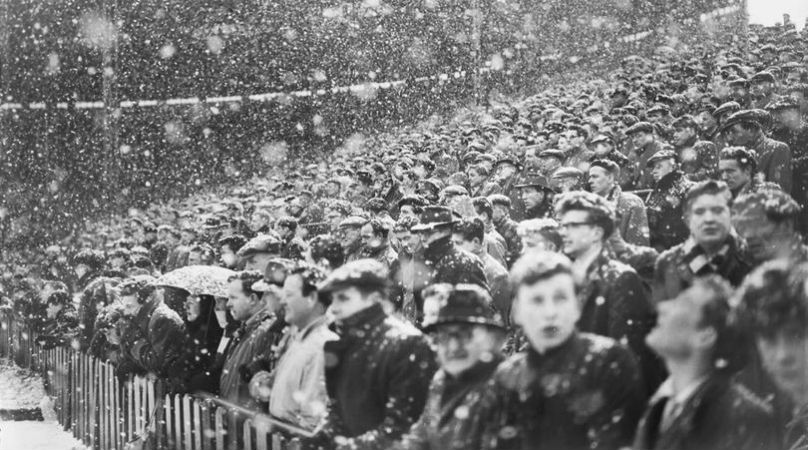
Once upon a time on Christmas Day...
For football fans, Christmas dinner isn’t the only thing to salivate over during the festive period. Fixtures come thick and fast, crammed into the month of December tighter than stuffing into a turkey. Christmas Day itself, however, is the one time that fans must make do without their football feast: the only crackers served up are those around the table. It never used to be this way. Until the 1950s, Christmas Day football was a tradition. Before we all got sucked towards our television sets for the Queen’s Speech and an EastEnders special, a full programme of fixtures on December 25 was the norm – and threw up much more interesting stories than those on Albert Square...
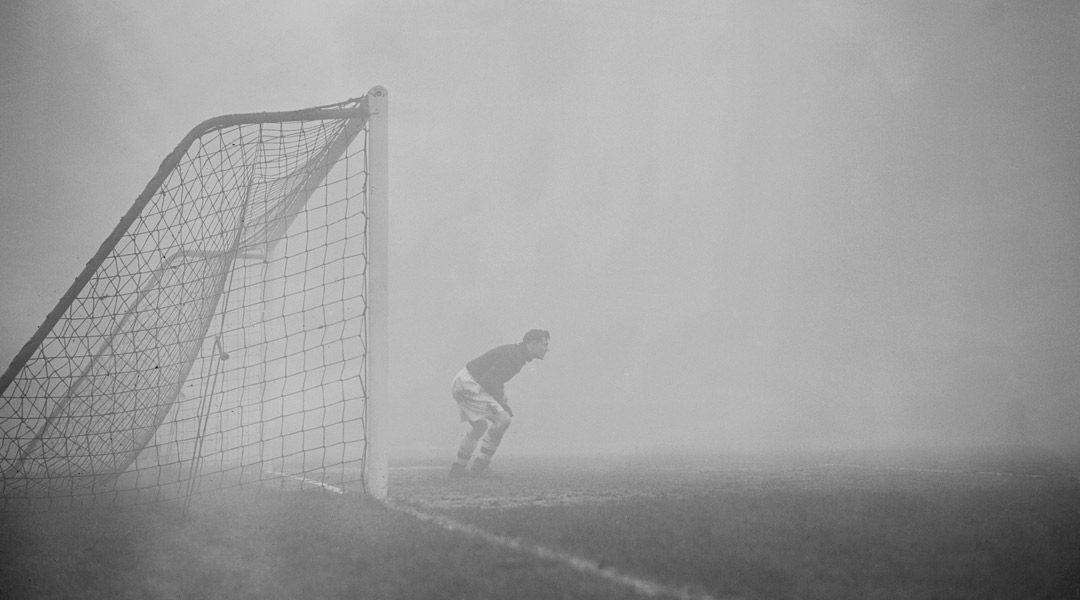
Befuddled by the fog
Poor Sam Bartram. The Charlton net-minder was manfully going about his duties against Chelsea at Stamford Bridge on Christmas Day 1937, but hadn’t realised the game had been abandoned during the second half due to heavy fog.
Bartram had assumed his side were merely well on top, but was greeted by a policeman after a few confused minutes – and later, plenty of guffaws from his team-mates.
“What on Earth are you doing here?” enquired the perplexed bobby. “The game was stopped a quarter of an hour ago.” “When I groped my way to the dressing room,” Bartram later wrote, “the rest of the Charlton team, already out of the bath and in their civvies, were convulsed with laughter.”
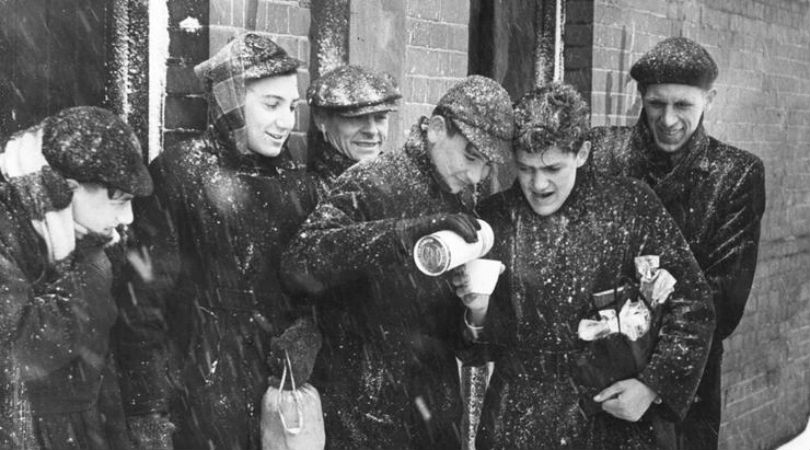
Foggy heads
While clubs loved the festive fixture list for its lucrative offerings, it wasn’t always such a hit with the players – many of whom were big drinkers and enjoyed a tipple. Fortunately for them, elite sports science was yet to kick in and for some managers the consumption of alcohol wasn’t just tolerated, but actively encouraged.
Clapton (now Leyton) Orient captain Ted Crawford once recalled how his entire team turned up drunk to a Christmas Day fixture, thanksto a barrel of beer supplied by their gaffer. Unsurprisingly they lost, 2-1 to Bournemouth; they did, however, shake off their Boxing Day hangovers to beat the Cherries in the return match 1-0.
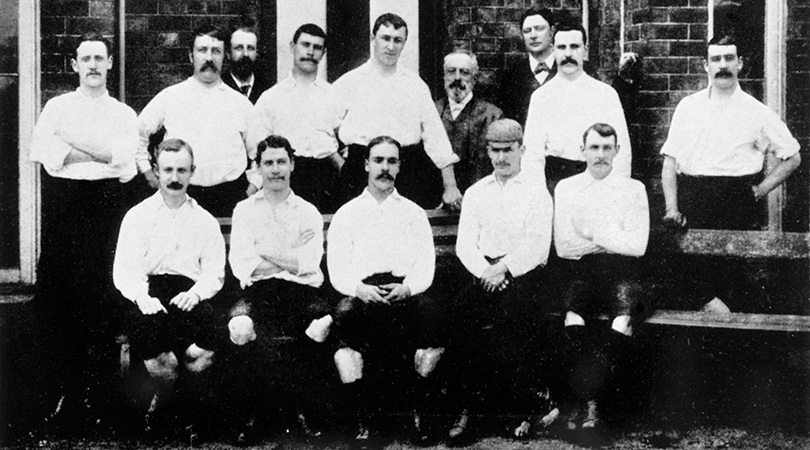
Hissing and lightning
The Football League’s first Christmas Day clash came between Preston’s ‘Invincibles’ and Aston Villa in 1889 – a humdinger between the country’s two best teams, attended by a huge 9,000 crowd.
Star of the show in Preston’s 3-2 win was the terrifying Nick Ross, their defender-turned-forward who intimidated his adversaries by hissing at them through a gruesome set of rotten teeth. He could play a bit too, though: he grabbed a hat-trick in this game, striking a corking equaliser from distance before notching his hat-trick goal with a “lightning shot”. Preston went on to win the league again.
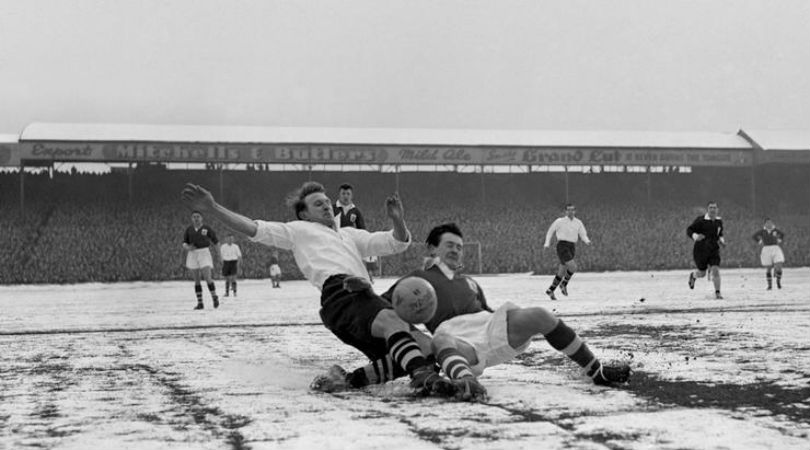
A matter of life and death
In 1909, Hibernian and Scotland defender James Main became increasingly sceptical about their game that day against Partick Thistle. The pitch was frozen over but with no postponement in sight, the match went ahead. “We’re risking life and limb,” Main said to his teammates before kick-off.
On the stroke of half-time, a heavy collision with Partick’s Frank Branscombe led to Main being carried from the pitch on a stretcher with stud marks decorating his stomach. After originally going home following Hibs’ 3-1 loss, Main was rushed to hospital with a ruptured bowel. Emergency services tried life-saving surgery but to no avail: Main passed away later that day.
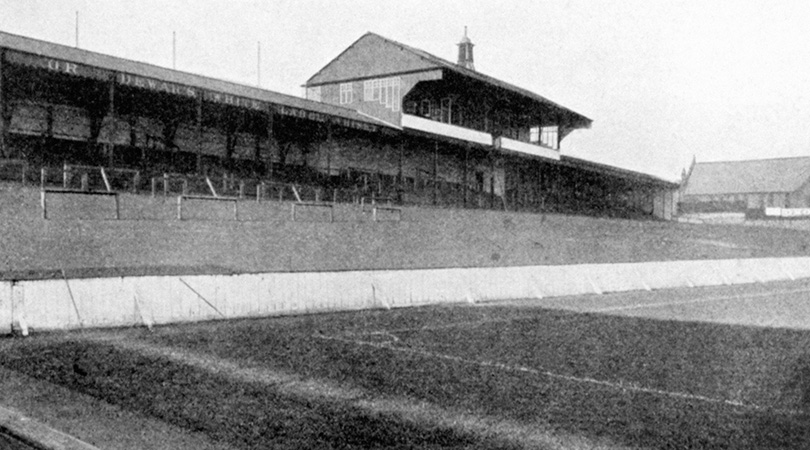
Two games, three days
Back in 1888, Everton took the term ‘congested fixture list’ to a whole new level when they pitched up to play twice on Christmas Day, and then again on Boxing Day. The first match was a Lancashire Cup tie against Blackburn Park Road, in which they came from behind to win 3-2.
Later that day they were back at Anfield (their pre-Goodison home) for an exhibition match versus Ulster FC. Their 3-0 victory was fairly routine – but not so much for keeper Charles Jolliffe who pitched in with the final goal, much to the amusement of a 2,000-strong crowd.
They were back at it again the next day: Bootle were the opponents and put up a much sterner test than Ulster. In blistery conditions, the two clubs played out a goalless stalemate as hail poured from the heavens.
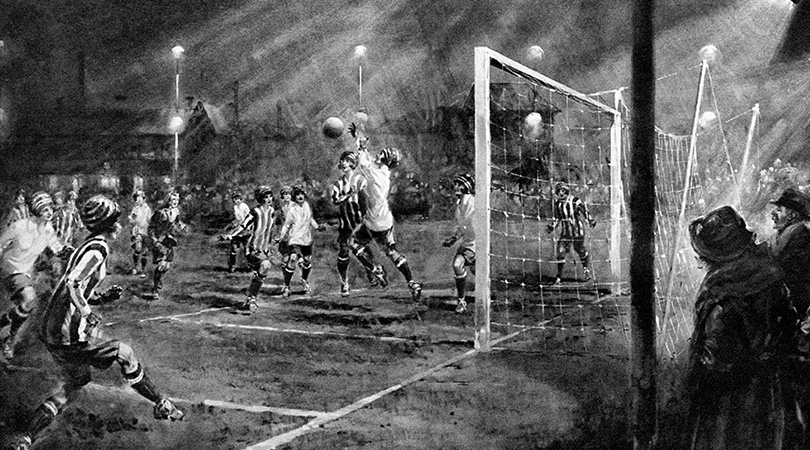
Girls just wanna have fun
Festive cheer was understandably minimal in 1917, what with the First World War still 11 months away from concluding. But while the men were away, women got their turn to play, and several teams emerged during this period.
The most famous (and successful) were Preston munitions factory team Dick, Kerr’s Ladies, who kicked their first ball on Christmas Day 1917. They won 4-0 at Deepdale and, according to one report, “their forward work was often surprisingly good… one or two of the ladies showing quite admirable ball control.”
Stop sniggering at the back there. Ten thousand spectators watched the contest, which generated £488 for a local hospital.
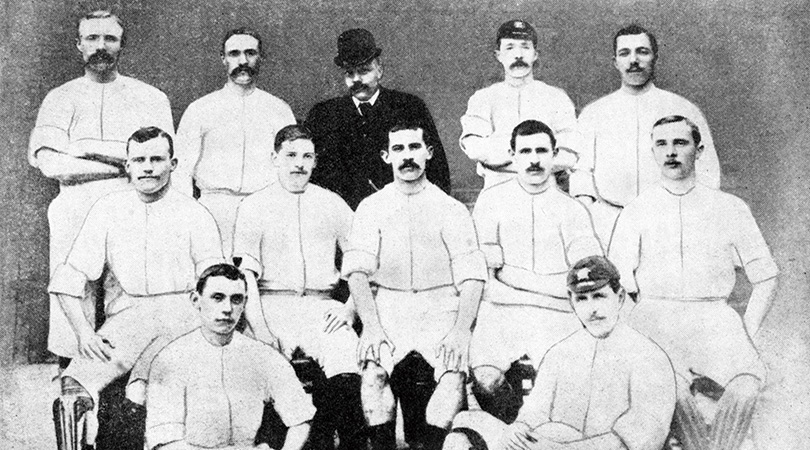
We predict a riot
Since Christmas Day fixtures were usually local affairs, authorities should have perhaps foreseen a bit more derby needle. One of England’s first big rivalries was between Blackburn and Darwen, who met in 1890 – well, sort of.
Blackburn had a more important game against Wolves the following day, so headed to Darwen with an understrength XI while they rested their better stars. An offended Darwen initially refused to play but eventually cobbled together a team of their own… although in the end neither side got to kick a ball.
Fans knew they were being short-changed, and acted accordingly. “The impatient crowd burst on the field, smashed the goalposts, and damaged the stands,” reported the Birmingham Daily Post. “No game took place, therefore.”
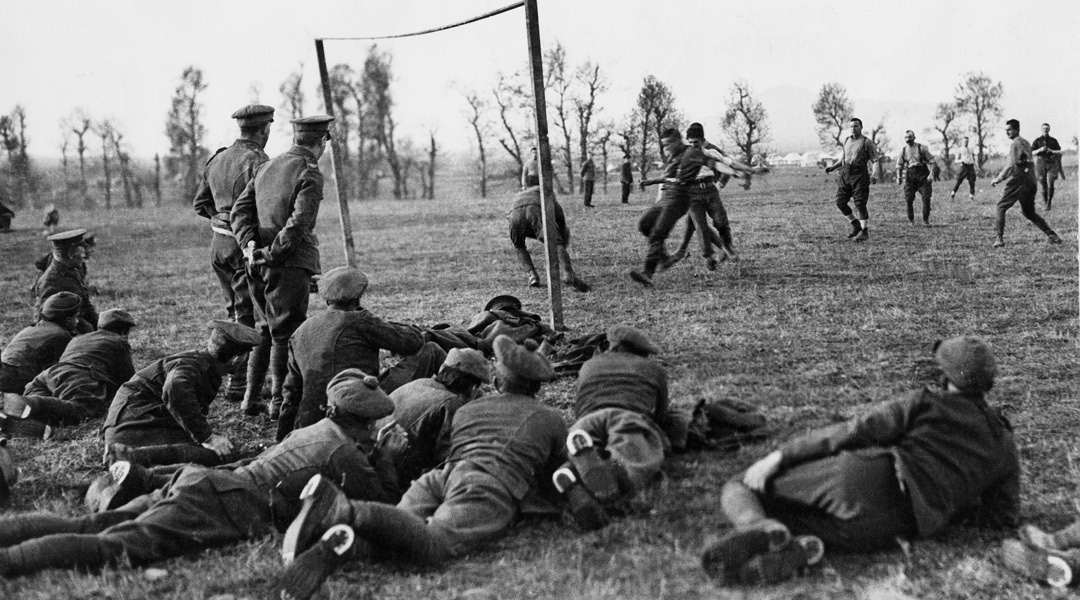
Caught in No Man’s Land
The most famous Christmas Day fixture came in 1914 during the First World War, when around 10,000 soldiers along the Western Front called a truce and halted hostilities to exchange gifts and enjoy a kickabout.
Letters from soldiers present prove it, including that from Staff Sergeant Clement Barker of the 1st Battalion Grenadier Guards: “A German looked over the trench – no shots,” he wrote. “Our men did the same, and then a few of our men went out and brought the dead in and buried them. The next thing, a football [was] kicked out of our trenches and Germans and English played football.”
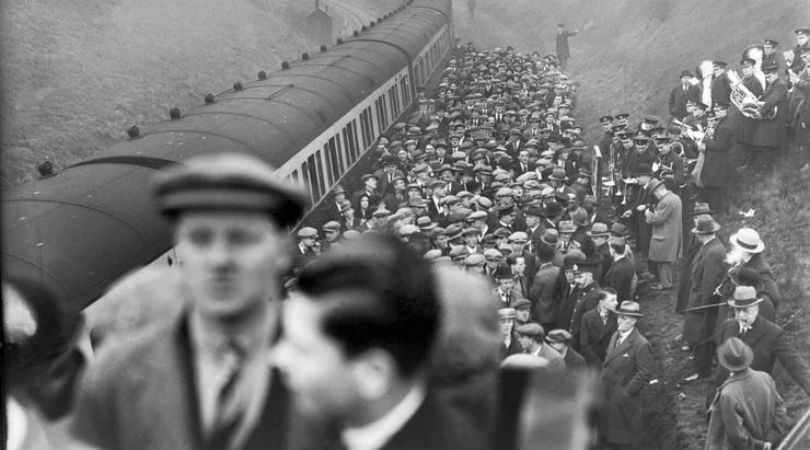
Television times
This Boxing Day provides a football feast for the armchair fan, who can watch no fewer than four televised games across the Premier League and Championship. In doing so, they will be following 87 years of broadcast tradition.
In 1930, during radio broadcasting’s formative years, fans were delighted to learn that the second half of Arsenal vs Manchester City would be live on BBC airwaves. Families gathered round their wireless to listen to the Gunners’ 3-1 victory at Highbury. The BBC’s George Allison, who commentated on the groundbreaking game, went on to succeed Herbert Chapman as Arsenal’s manager three years later.
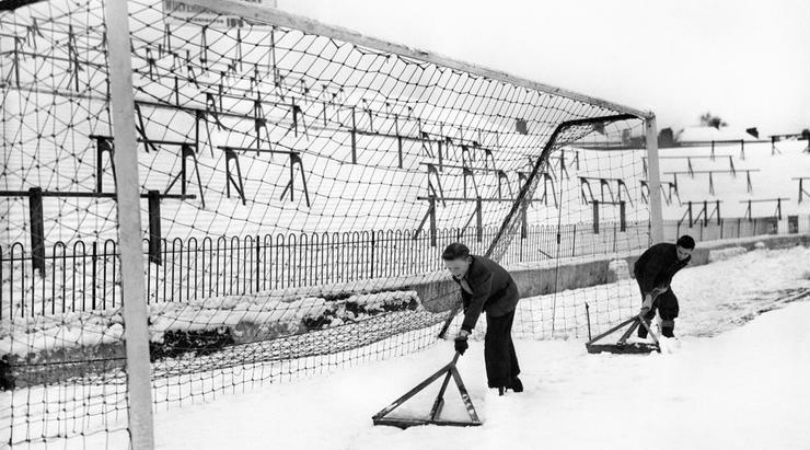
Festive Europe
It wasn’t just England that spent December 25 hoofing balls around. In 1955, the inaugural Inter-Cities Fairs Cup – the precursor to the Europa League – took place alongside the quarter-finals of the European Cup.
In the Fairs Cup, a Barcelona XI (essentially Barça's team plus one Espanyol player for good measure) faced a Copenhagen XI called Staevnet. In an enthralling encounter, Barça raced into a 4-0 lead by half-time before Staevnet pulled two back. The game eventually finished 6-2, with legendary Laszlo Kubala among the scorers.
The European Cup pitted Real Madrid against Partizan Belgrade; Los Blancos breezed past the Yugoslavs 4-0 with Alfredo Di Stefano capping off proceedings. Barcelona went on to become Inter-City champions while Madrid picked up the European crown.
